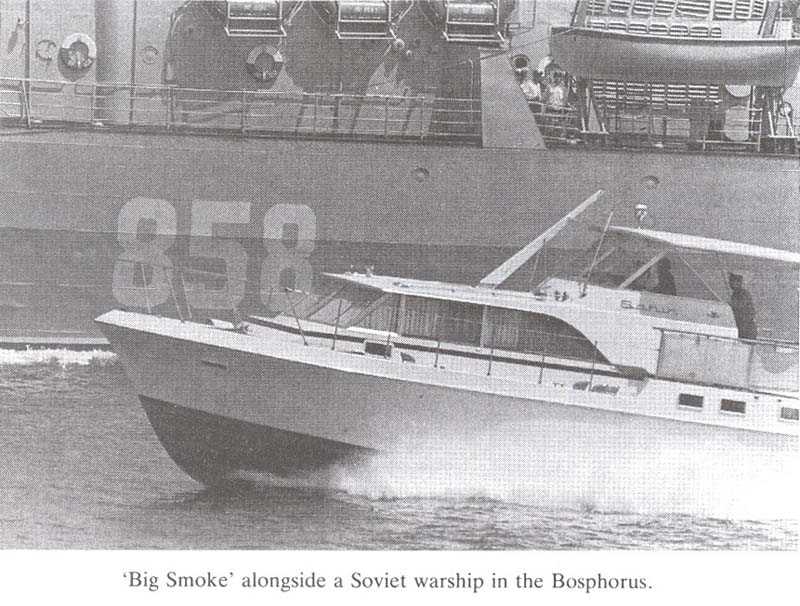 Big Smoke alongside a Soviet Warship in the Bosphorus
Big Smoke alongside a Soviet Warship in the Bosphorus
Photo of Big Smoke, a motor yacht used by the U.S. Navy’s Task Force 157, for intelligence collection operations in the Mediterranean. Photo from Jeffrey Richelson, “Task Force 157: The U.S. Navy’s Secret Intelligence Service, 1966-77,” Intelligence and National Security 11 (1996), 118; used with permission of the author and the journal.
Central Intelligence Agency (?), “Soviet Nuclear Weapons in Egypt?”, 30 October 1973, Top Secret, Excised copy
Archival source: Nixon NSC, Henry A. Kissinger Office Files, box 132, Egypt-Ismail Vol. VII Oct. 1973
In the weeks after the October War, U.S. government officials leaked to the media information about intelligence gleanings of possible shipments of Scud missiles and nuclear weapons to Soviet bases in Egypt during the conflict. While officials were more certain about the deployment of the missiles, it was more debatable whether Moscow had actually deployed nuclear weapons to foreign territory because of the great risks involved. According to the press reports, defense officials saw a “reasonable possibility” that nuclear weapons were shipped, but members of the Senate Armed Services Committee, John C. Stennis and Stuart Symington, “said the evidence did not convince them.” (Note 8)
For the first time, the U.S. government has released one of the intelligence reports that may have been the basis for the leaks. While intelligence agencies exempted this document in its entirety after the first request to the Nixon Library and also after an appeal, ISCAP agreed to release much of it, suggesting that the much of the information had been overclassified.
“Soviet Nuclear Weapons in Egypt?” draws back from definite conclusions, suggesting why some U.S. officials believed that the evidence was not good enough. Interestingly, the report indicates which Soviet cargo ship—the Mezhdurechensk—was one of the objects of suspicion, and that U.S. intelligence photographed the ship at Alexandria on 25 October.
While much of the evidence concerning the alleged deployment has been redacted from the report, probably on sources and methods grounds, a prize-winning article by Archive senior research fellow, Jeffrey Richelson, “Task Force 157: The U.S. Navy’s Secret Intelligence Service, 1966-1977,” published in Intelligence and National Security, clarifies the issue. According to Richelson’s account, Task Force 157 included a yacht equipped with a special nuclear intelligence sensor that operated in the Bosphurus and shadowed Soviet ships. The problem was that the sensor was “prone to giving positive false alarms,” and could not determine whether the “type of radiation in question” indicated the presence of nuclear weapons. This makes it all the more understandable why the authors of the 30 October report were unwilling to draw firm conclusions about the presence of nuclear weapons on the Mezhdurechensk: “The evidence should not yet be regarded as though it creates a strong presumption that the Soviets dispatched nuclear weapons to Egypt.” (Note 9)


Leave a Reply